|
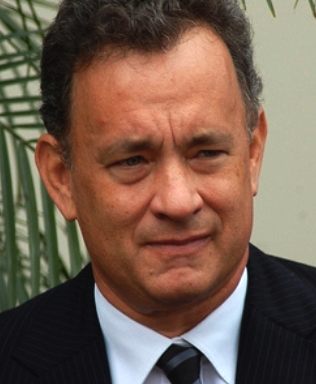
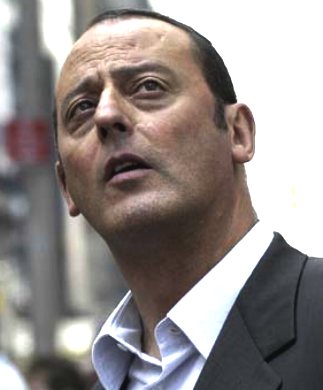
Robert
Langdon and Jacques Saunière (Tom Hanks and Jean Reno)
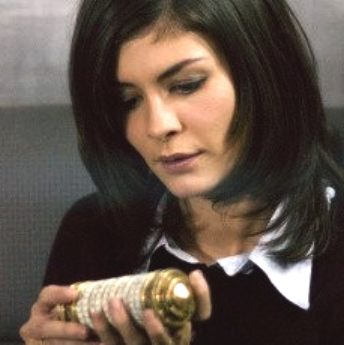
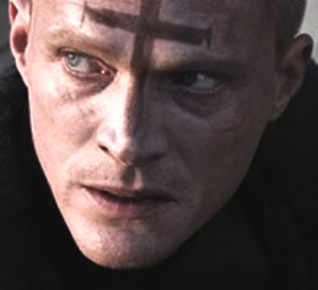
Sophie Neveu
and Silas (Audrey Tautou and Paul Bettany)
The Da Vinci Code is a 2003 mystery-detective novel written by Dan Brown. It follows symbologist
Robert Langdon and cryptologist Sophie Neveu as they investigate a murder in Paris's Louvre Museum and discover a battle between the Priory of Sion and Opus Dei over the possibility of Jesus having been married to Mary Magdalene. The title of the novel refers to, among other things, the fact that the murder victim is found in the Grand Gallery of the Louvre, naked and posed like Leonardo da Vinci's famous drawing, the Vitruvian Man, with a cryptic message written beside his body and a pentacle drawn on his chest in his own blood.
The novel is part of the exploration of alternative religious history, the central plot point of which is that the Merovingian kings of France were descended from the bloodline of
Jesus Christ and Mary Magdalene, ideas derived from Clive Prince's The Templar Revelation (1997) and books by Margaret Starbird. The book also refers to The Holy Blood and the Holy Grail (1982) though Dan Brown has stated that it was not used as research material.
The book has provoked a popular interest in speculation concerning the Holy Grail legend and Magdalene's role in the history of Christianity. The book has been extensively denounced by many Christian denominations as an attack on the Roman Catholic Church. It has also been consistently criticized for its historical and scientific inaccuracies. The novel nonetheless became a worldwide
bestseller that sold 80 million copies as of 2009 and has been translated into 44 languages. Combining the detective, thriller and conspiracy fiction genres, it is Brown's second novel to include the character Robert Langdon, the first being his 2000 novel Angels & Demons. In November 2004, Random House published a Special Illustrated Edition with 160 illustrations. In 2006, a film adaptation was released by
Sony's Columbia Pictures.The novel received fierce criticism in the West, while it was not banned from being sold in the West, but the opposite took place in the
Middle East, for which many Arab Muslim countries including
Jordan, Egypt and
Lebanon have banned the novel, upon the request of the Christian communities living there from the authorities.
PLOT SUMMARY
Louvre curator and Priory of Sion Grand Master Jacques Saunière is fatally shot one night at the museum by an albino Catholic monk named Silas, who is working on behalf of someone known only as the Teacher, who wishes to discover the location of the "keystone," an item crucial to the search for the Holy Grail. After Saunière's body is discovered in the pose of the Vitruvian Man, the police summon Harvard Professor Robert Langdon, who is in town on business. Police Captain Bezu Fache tells him that he was summoned to help the police decode the cryptic message Saunière left during the final minutes of his life. The note also includes a Fibonacci sequence left out of order, as a code. Langdon explains to Fache that Saunière was a leading authority in the subject of goddess artwork and that the pentacle Saunière drew in his own blood represents an allusion to the goddess and not "devil worship", as Fache believes.
A police cryptographer, Sophie Neveu secretly explains to Langdon she is Saunière's estranged granddaughter, and that Fache thinks Langdon is the murderer, because of the note her grandfather left saying to "find Robert Langdon," which she says Fache had erased prior to Langdon's arrival. Sophie is troubled by memories of her grandfather's involvement in a secret pagan group. However, she understands that her grandfather intended Langdon to decipher the code, which she and Langdon realize leads them to a safe deposit box at the Paris branch of the Depository Bank of
Zurich, which Sophie and Langdon go to after escaping the police. In the safe deposit box they find the keystone: a cryptex, a cylindrical, hand-held vault with five concentric, rotating dials labeled with letters that when lined up properly form the correct password, unlocking the device. If the cryptex is forced open, an enclosed vial of vinegar ruptures and dissolves the message, which was written on papyrus. The box containing the cryptex contains clues to its password.
Langdon and Neveu take the keystone to Langdon's friend, Sir Leigh Teabing, an expert on the
Holy Grail. There, Teabing explains that the Grail is not a cup, but the tomb containing the bones of Mary Magdalene. The trio then flees the country on Teabing's private plane, on which they conclude that the proper combination of letters spell out Sophie's given name, "SOFIA." Opening the cryptex, they discover a smaller cryptex inside it, along with another riddle that ultimately leads the group to the tomb of Isaac Newton at Westminster Abbey.
During the flight to Britain, Sophie reveals the source of her estrangement from her grandfather, ten years earlier. Arriving home unexpectedly from university, Sophie clandestinely witnesses a spring fertility rite conducted in the secret basement of her grandfather's country estate. From her hiding place, she is shocked to see her grandfather making love to a woman at the center of a ritual attended by men and women who are wearing masks and chanting praise to the goddess. She flees the house and breaks off all contact with Saunière. Langdon explains that what she witnessed was an ancient ceremony known as Hieros gamos or "sacred marriage".
By the time they arrive at Westminster Abbey, Teabing is revealed to be the Teacher for whom Silas is working. Teabing wishes to use the Holy Grail, which he believes is a series of documents establishing that Jesus Christ married Mary Magdalene and bore children, in order to ruin the Vatican. He compels Langdon at gunpoint to solve the second cryptex's password, which Langdon realizes is "APPLE." Langdon secretly opens the cryptex and removes its contents before destroying it in front of Teabing. Teabing is arrested by Fache, who by now knows that Langdon was innocent. Bishop Aringarosa, realizing that Silas has been used to
murder innocent people, rushes to help the police find him. When the police find Silas hiding in an Opus Dei Center, he assumes that they are there to kill him, and he rushes out, accidentally shooting Bishop Aringarosa. Bishop Aringarosa survives but is informed that Silas was found dead later from a bullet wound.
The final message inside the second keystone leads Sophie and Langdon to Rosslyn Chapel, whose docent turns out to be Sophie's long-lost brother, whom Sophie had been told died as a child in the car accident that killed her parents. The guardian of Rosslyn Chapel, Marie Chauvel Saint Clair, is Sophie's long-lost grandmother, and the widow of Jacques Saunière. It is revealed that Sophie is a descendant of Jesus Christ and Mary Magdalene. The Priory of Sion hid her identity to protect her from possible threats to her life.
The real meaning of the last message is that the Grail is buried beneath the small pyramid directly below the inverted glass pyramid of the Louvre. It also lies beneath the "Rose Line," an allusion to "Roslyn." Langdon figures out this final piece to the puzzle in the last pages of the book, but he does not appear inclined to tell anyone about this.
CHARACTERS
Robert Langdon - Tom Hanks
Jacques Saunière - Jean Reno
Sophie Neveu
Bezu Fache
Silas
Manuel Aringarosa
Sister Sandrine
André Vernet
Leigh Teabing
Rémy Legaludec
Jérôme Collet
Marie Chauvel Saint-Clair
Pamela Gettum
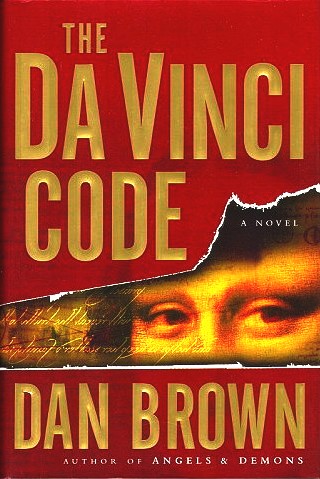
SECRET OF THE HOLY GRAIL
In the novel Leigh Teabing explains to Sophie Neveu that the figure at the right hand of Jesus in Leonardo da Vinci's painting of "The Last Supper" is not the apostle John, but actually Mary Magdalene. Leigh Teabing says that the absence of a chalice in Leonardo's painting means Leonardo knew that Mary Magdalene was the actual Holy Grail and the bearer of Jesus' blood. Leigh Teabing goes on to explain that this idea is supported by the shape of the letter "V" that is formed by the bodily positions of Jesus and Mary, as "V" is the symbol for the sacred feminine. The absence of the Apostle John in the painting is explained by knowing that John is also referred to as "the Disciple Jesus loved", code for Mary Magdalene. The book also notes that the color scheme of their garments are inverted: Jesus wears a red tunic with royal blue cloak; Mary Magdalene wears the opposite.
According to the novel, the secrets of the Holy Grail, as kept by the Priory of Sion are as follows:
The Holy Grail is not a physical chalice, but a woman, namely Mary Magdalene, who carried the bloodline of Christ.
The Old French expression for the Holy Grail, San gréal, actually is a play on Sang réal, which literally means "royal blood" in Old French.
The Grail relics consist of the documents that testify to the bloodline, as well as the actual bones of Mary Magdalene.
The Grail relics of Mary Magdalene were hidden by the Priory of Sion in a secret crypt, perhaps beneath Rosslyn Chapel.
The Church has suppressed the truth about Mary Magdalene and the Jesus bloodline for 2000 years. This is principally because they fear the power of the sacred feminine in and of itself and because this would challenge the primacy of Saint Peter as an apostle.
Mary Magdalene was of royal descent (through the Jewish House of Benjamin) and was the wife of Jesus, of the House of David. That she was a prostitute was slander invented by the Church to obscure their true relationship. At the time of the
Crucifixion, she was pregnant. After the Crucifixion, she fled to Gaul, where she was sheltered by the Jews of Marseille. She gave birth to a daughter, named Sarah. The bloodline of Jesus and Mary Magdalene became the Merovingian dynasty of France.
The existence of the bloodline was the secret that was contained in the documents discovered by the Crusaders after they conquered Jerusalem in 1099 (see Kingdom of
Jerusalem). The Priory of Sion and the Knights Templar were organized to keep the secret.
The secrets of the Grail are connected, according to the novel, to Leonardo da Vinci's work as follows:
Leonardo was a member of the Priory of Sion and knew the secret of the Grail. The secret is in fact revealed in The Last Supper, in which no actual chalice is present at the table. The figure seated next to Christ is not a man, but a woman, his wife Mary Magdalene. Most reproductions of the work are from a later alteration that obscured her obvious female characteristics.
The androgyny of the Mona Lisa reflects the sacred union of male and female implied in the holy union of Jesus and Mary Magdalene. Such parity between the cosmic forces of masculine and feminine has long been a deep threat to the established power of the Church. The name Mona Lisa is actually an anagram for "Amon L'Isa", referring to the father and mother gods of
Ancient Egyptian religion (namely Amun and Isis).
REACTION - Sales
Brown's novel was a major success in 2004 and was outsold only by J. K. Rowling's Harry Potter and the Order of the Phoenix.
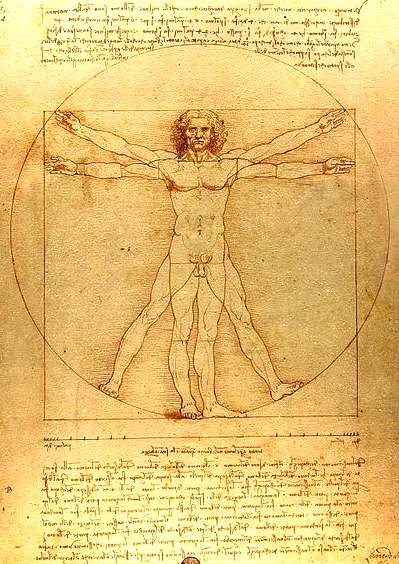
HISTORICAL INACCURACIES
The book generated criticism when it was first published for inaccurate description of core aspects of Christianity, the history of the Church (the author habitually uses the terms "the Roman Catholic Church" and "Vatican" when speaking of the unified Church prior to the East–West Schism), and descriptions of European art, history, and architecture. The book has received mostly negative reviews from Catholic and other Christian communities.
Many critics took issue with the level of research Brown did when writing the story. New York Times writer Laura Miller characterized the novel as "based on a notorious hoax", "rank nonsense", and "bogus", saying the book is heavily based on the fabrications of Pierre Plantard, who is asserted to have created the Priory of Sion in 1956.
Critics accuse Brown of distorting and fabricating history. For example, Marcia Ford wrote:
Regardless of whether you agree with Brown's conclusions, it's clear that his history is largely fanciful, which means he and his publisher have violated a long-held if unspoken agreement with the reader: Fiction that purports to present historical facts should be researched as carefully as a nonfiction book would be.
Richard Abanes wrote:
The most flagrant aspect ... is not that Dan Brown disagrees with Christianity but that he utterly warps it in order to disagree with it ... to the point of completely rewriting a vast number of historical events. And making the matter worse has been Brown's willingness to pass off his distortions as ‘facts' with which innumerable scholars and historians agree.
The book opens with the claim by Dan Brown that "The Priory of Sion – a European secret society founded in 1099 – is a real organization". This assertion is broadly disputed. Some critics claim that the Priory of Sion was a hoax created in 1956 by Pierre Plantard. The author also claims that "all descriptions of artwork, architecture, documents ... and secret rituals in this novel are accurate", but this claim is disputed by numerous academic scholars expert in numerous areas.
Dan Brown himself addresses the idea of some of the more controversial aspects being fact on his web site, stating that the "FACT" page at the beginning of the novel mentions only "documents, rituals, organization, artwork and architecture", but not any of the ancient theories discussed by fictional characters, stating that "Interpreting those ideas is left to the reader". Brown also says, "It is my belief that some of the theories discussed by these characters may have merit." and "the secret behind The Da Vinci Code was too well documented and significant for me to dismiss."
In 2003, while promoting the novel, Brown was asked in interviews what parts of the history in his novel actually happened. He replied "Absolutely all of it." In a 2003 interview with CNN's Martin Savidge he was again asked how much of the historical background was true. He replied, "99% is true ... the background is all true". Asked by Elizabeth Vargas in an ABC News special if the book would have been different if he had written it as non-fiction he replied, "I don't think it would have."
In 2005, UK TV personality Tony Robinson edited and narrated a detailed rebuttal of the main arguments of Dan Brown and those of Michael Baigent, Richard Leigh and Henry Lincoln, who authored the book Holy Blood, Holy Grail, in the programme The Real Da Vinci Code, shown on British TV Channel 4. The program featured lengthy interviews with many of the main protagonists cited by Brown as "absolute fact" in The Da Vinci Code. Arnaud de Sède, son of Gérard de Sède, stated categorically that his father and Plantard had made up the existence of the Prieuré de Sion, the cornerstone of the Jesus bloodline theory – to quote Arnaud de Sede in the program, "frankly, it was piffle".
However, the presentation of a fourth century papyrus fragment called the Gospel of Jesus' wife at the International Congress of Coptic Studies in Rome on September 18, 2012 by Karen L. King may fuel the idea that early Christians believed that Jesus was married. The papyrus is a copy of a gospel dating back from the 2nd century in which Jesus refers to "my wife".
The earliest appearance of this theory is due to the 13th-century Cistercian monk and chronicler Peter of Vaux de Cernay who claimed it was part of Catharist belief that the earthly Jesus Christ had a relationship with Mary Magdalene, described as his concubine. The program The Real Da Vinci Code also cast doubt on the Rosslyn Chapel association with the Grail and on other related stories, such as the alleged landing of Mary Magdalene in France.
According to The Da Vinci Code, the Roman Emperor Constantine I suppressed Gnosticism because it portrayed Jesus as purely human. The novel's argument is as follows. Constantine wanted Christianity to act as a unifying religion for the Roman Empire. He thought Christianity would appeal to pagans only if it featured a demigod similar to pagan heroes. According to the Gnostic Gospels, Jesus was merely a human prophet, not a demigod. Therefore, to change Jesus' image, Constantine destroyed the Gnostic Gospels and promoted the gospels of Matthew, Mark, Luke, and John, which portray Jesus as divine or semidivine.
According to Tim O'Neill, Gnosticism did not portray Jesus as merely human. All Gnostic writings depict Christ as purely divine, his human body being a mere illusion (see Docetism). Some Gnostic sects saw Christ this way because they regarded matter as evil, and therefore believed that a divine spirit would never have taken on a material body.
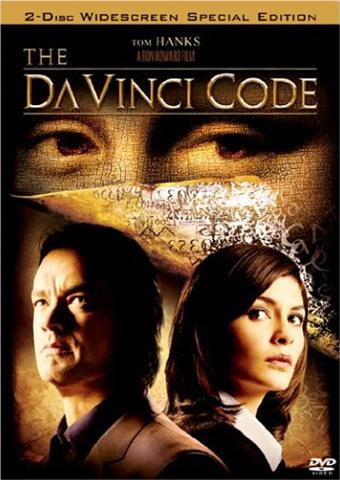
LITERARY CRITICISM
The book received both positive and negative reviews from critics, and it has been the subject of negative appraisals concerning its portrayal of history. Its writing and historical accuracy were reviewed negatively by The New
Yorker, Salon.com, and Maclean's.
Janet Maslin of The New York Times said, "it concisely conveys the kind of extreme enthusiasm with which this riddle-filled, code-breaking, exhilaratingly brainy thriller can be recommended. That word is wow. The author is Dan Brown (a name you will want to remember). In this gleefully erudite suspense novel, Mr. Brown takes the format he has been developing through three earlier novels and fine-tunes it to blockbuster perfection."
David Lazarus of The San Francisco Chronicle said, "This story has so many twists – all satisfying, most unexpected – that it would be a sin to reveal too much of the plot in advance. Let's just say that if this novel doesn't get your pulse racing, you need to check your meds."
While interviewing Umberto Eco in a 2008 issue of The Paris Review, Lila Azam Zanganeh characterized The Da Vinci Code as "a bizarre little offshoot" of Eco's novel, Foucault’s Pendulum. In response, Eco remarked, "Dan Brown is a character from Foucault’s Pendulum! I invented him. He shares my characters’ fascinations—the world conspiracy of Rosicrucians, Masons, and Jesuits. The role of the Knights Templar. The hermetic secret. The principle that everything is connected. I suspect Dan Brown might not even exist."
The book appeared on a 2010 list of 101 best books ever written, which was derived from a survey of more than 15,000 Australian readers.
Salman Rushdie said during a lecture, "Do not start me on 'The Da Vinci Code.' A novel so bad that it gives bad novels a bad name."
Stephen Fry has referred to Brown's writings as "complete loose stool-water" and "arse gravy of the worst kind." In a live chat on June 14, 2006, he clarified, "I just loathe all those book[s] about the Holy Grail and Masons and Catholic conspiracies and all that botty-dribble. I mean, there's so much more that's interesting and exciting in art and in history. It plays to the worst and laziest in humanity, the desire to think the worst of the past and the desire to feel superior to it in some fatuous way."
Stephen King likened Dan Brown's work to "Jokes for the John," calling such literature the "intellectual equivalent of Kraft Macaroni and Cheese." The
New York Times, while reviewing the movie based on the book, called the book "Dan Brown's best-selling primer on how not to write an English sentence". The New Yorker reviewer Anthony Lane refers to it as "unmitigated junk" and decries "the crumbling coarseness of the style." Linguist Geoffrey Pullum and others posted several entries critical of Dan Brown's writing, at Language Log, calling Brown one of the "worst prose stylists in the history of literature" and saying Brown's "writing is not just bad; it is staggeringly, clumsily, thoughtlessly, almost ingeniously bad." Roger Ebert described it as a "potboiler written with little grace and style," although he did say it did "supply an intriguing plot." In his review of the film National Treasure, whose plot also involves ancient conspiracies and treasure hunts, he wrote: "I should read a potboiler like The Da Vinci Code every once in a while, just to remind myself that life is too short to read books like The Da Vinci Code."
LAWSUITS
Author Lewis Perdue alleged that Brown plagiarized from two of his novels, The Da Vinci Legacy, originally published in 1983, and Daughter of God, originally published in 2000. He sought to block distribution of the book and film. However, Judge George Daniels of the US District Court in New York ruled against Perdue in 2005, saying that "A reasonable average lay observer would not conclude that The Da Vinci Code is substantially similar to Daughter of God" and that "Any slightly similar elements are on the level of generalized or otherwise unprotectable
ideas." Perdue appealed, the 2nd US Circuit Court of Appeals upheld the original decision, saying Mr. Perdue's arguments were "without merit".
In early 2006, Baigent and Leigh filed suit against Brown's publishers, Random House. They alleged that significant portions of The Da Vinci Code were plagiarized from Holy Blood, Holy Grail, violating their copyright. Brown confirmed during the court case that he named the principal Grail expert of his story Leigh Teabing, an anagram of "Baigent Leigh", after the two plaintiffs. In reply to the suggestion that Henry Lincoln was also referred to in the book, since he has medical problems resulting in a severe limp, like the character of Leigh Teabing, Brown stated he was unaware of Lincoln's illness and the correspondence was a coincidence.
Because Baigent and Leigh had presented their conclusions as historical research, not as fiction, Justice Peter Smith, who presided over the trial, deemed that a novelist must be free to use these ideas in a fictional context, and ruled against Baigent and Leigh. Smith also hid his own secret code in his written judgement, in the form of seemingly random italicized letters in the 71-page document, which apparently spell out a message. Smith indicated he would confirm the code if someone broke it. Baigent and Leigh appealed, unsuccessfully, to the Court of Appeal.
In April 2006 Mikhail Anikin, a Russian scientist and art historian working as a senior researcher at the Hermitage Museum in St Petersburg, stated the intention to bring a lawsuit against Dan Brown, maintaining that he was the one who coined the phrase used as the book's title and one of the ideas regarding the Mona Lisa used in its plot. Anikin interprets the Mona Lisa to be an Christian allegory consisting of two images, one of Jesus Christ that comprises the image's right half, one of the Virgin Mary that forms its left half. According to Anikin, he expressed this idea to a group of experts from the Museum of Houston during a 1988 René Magritte exhibit at the Hermitage, and when one of the Americans requested permission to pass it along to a friend Anikin granted the request on condition that he be credited in any book using his interpretation. Anikin eventually compiled his research into Leonardo Da Vinci or Theology on Canvas, a book published in 2000, but The Da Vinci Code, published three years later, makes no mention of Anikin and instead asserts that the idea in question is a "well-known opinion of a number of scientists."
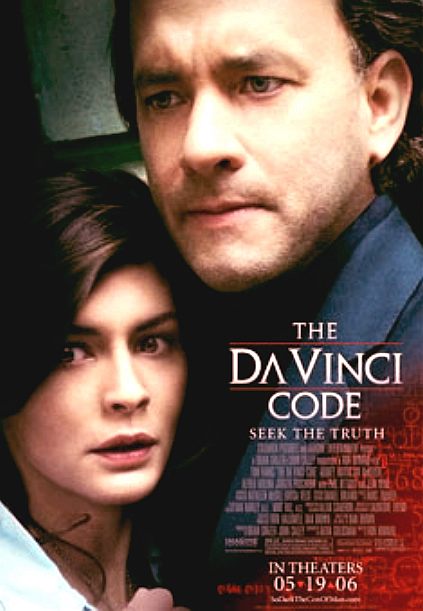
PARODIES
The book was parodied by Adam Roberts and Toby Clements with the books The Va Dinci Cod, and The Asti Spumante Code, respectively, both in 2005.
A 2005 telemovie spin-off of the Australian television series Kath & Kim parodied the film version as Da Kath and Kim Code in 2005.
The 2006 BBC programme Dead Ringers parodied The Da Vinci Code, calling it the "Da Rolf Harris Code".
South African political cartoonist Zapiro published a 2006 book collection of his strips entitled Da Zuma Code, which parodies the former deputy president Jacob
Zuma.
A 2006 independent film named The Norman Rockwell Code parodied the book and film. Instead of that of a curator in the Louvre, the murder is that of a curator at the Norman Rockwell Museum in Stockbridge, Massachusetts.
The DiCaprio Code, a 2006, seven-part animated series by Movies.com and Scrapmation.
The book was parodied in the 2007 South Park episode "Fantastic Easter Special" and Robert Rankin's novel The Da-da-de-da-da Code.
The characters Lucy and Silas are parodied in the 2007 film Epic Movie, which begins with a scene similar to the opening of The Da Vinci Code, with Silas chasing the orphan Lucy.
Szyfr Jana Matejki (Jan Matejko's Cipher) is a 2007 Polish parody by Dariusz Rekosz. A sequel, Ko(s)miczna futryna: Szyfr Jana Matejki II (Co[s]mic Door-frame: Jan Matejko's Cipher II), was released in 2008. The main character is inspector Józef Świenty, who tries to solve The Greatest Secret of Mankind (Największa Tajemnica Ludzkości) – parentage of Piast dynasty.
The book was parodied in the 2008 American Dad! episode "Black Mystery Month", in which Stan Smith searches for the controversial truth that Mary Todd Lincoln invented peanut butter.
In 2008, it was parodied in the second series of That Mitchell and Webb Look as "The Numberwang Code", a trailer for a fictional film based on a recurring sketch on the show.
The book's plot is parodied in "The Duh-Vinci Code", an episode of the animated TV series Futurama.
The book was parodied in the Mad episode "The Da Grinchy Code/Duck," in which the greatest movie minds try to solve the mystery of the
Grinch.
RELEASE DETAILS
The book has been translated into over 40 languages, primarily hardcover.
In reference to Richard Leigh and Michael Baigent, two of the authors of The Holy Blood and the Holy Grail, Brown named the principal Grail expert of his story "Leigh Teabing", an anagram of "Baigent Leigh". Brown confirmed this during the court case. In reply to the suggestion that Lincoln was also referenced, as he has medical problems resulting in a severe limp, like the character of Leigh Teabing, Brown stated he was unaware of Lincoln's illness and the correspondence was a coincidence. After losing before the High Court on July 12, 2006, Michael Baigent and Richard Leigh appealed, unsuccessfully, to the Court of Appeal.
Following the trial, it was found that the publicity had actually significantly boosted UK sales of The Holy Blood and the Holy Grail.
Major English-language (hardcover) editions include:
(US) The Da Vinci Code, April 2003 (First edition), Doubleday, ISBN 0-385-50420-9.
The Da Vinci Code, Special Illustrated Edition, November 2, 2004, Doubleday, ISBN 0-385-51375-5 (as of January 2006, has sold 576,000 copies).
(UK) The Da Vinci Code, April 2004, Corgi Adult. ISBN 0-552-14951-9.
(UK) The Da Vinci Code: The Illustrated Edition, October 2, 2004, Bantam Press. ISBN 0-593-05425-3.
(US/Canada) The Da Vinci Code (Trade Paperback edition), March 2006, Anchor Books.
On March 28, 2006, Anchor Books released 5 million paperback copies of the book, and Broadway Books released 200,000 paperback copies of The Da Vinci Code Special Illustrated Edition.
On May 19, the day of the film's release, Doubleday and Broadway Books released The Da Vinci Code Illustrated Screenplay: Behind the Scenes of the Major Motion Picture, by screenwriter Akiva Goldsman, with the introductions by Ron Howard and Dan Brown. It included film stills, behind-the-scenes photos and the full script.
There were 25,000 copies of the hardcover, and 200,000 of the paperback version.
FILM
Columbia Pictures adapted the novel to film, with a screenplay written by Akiva Goldsman, and Academy Award winner Ron Howard directing. The film was released on May 19, 2006, and stars
Tom Hanks as Robert Langdon, Audrey Tautou as Sophie Neveu, and Sir Ian McKellen as Leigh Teabing. During its opening weekend, moviegoers spent an estimated $77 million in
America, and
$224 million worldwide
A
- Z FILMS INDEX
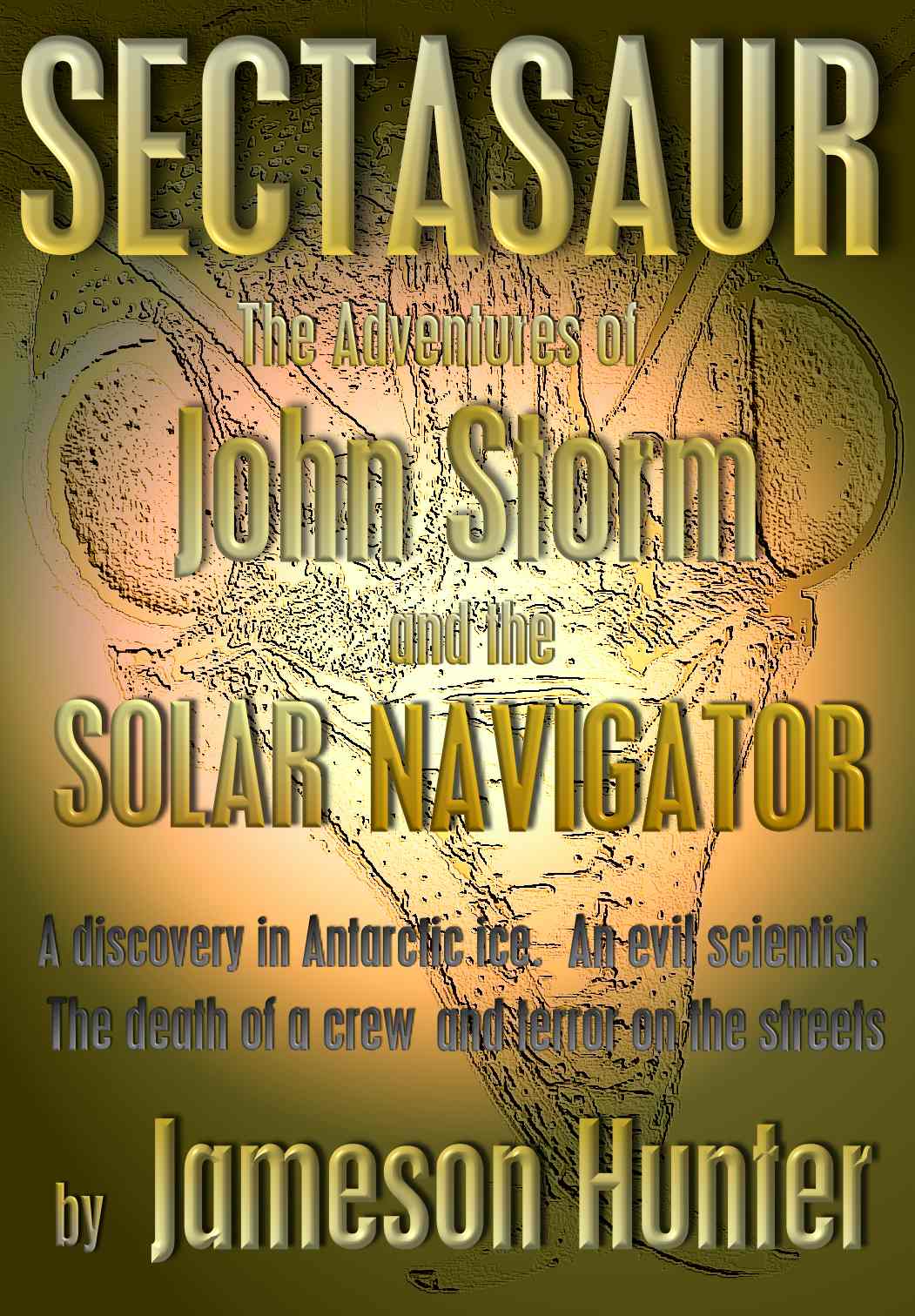
Scifi
adventure set in the Antarctic where scientists discover giant
insects
from the age of dinosaurs.
|







